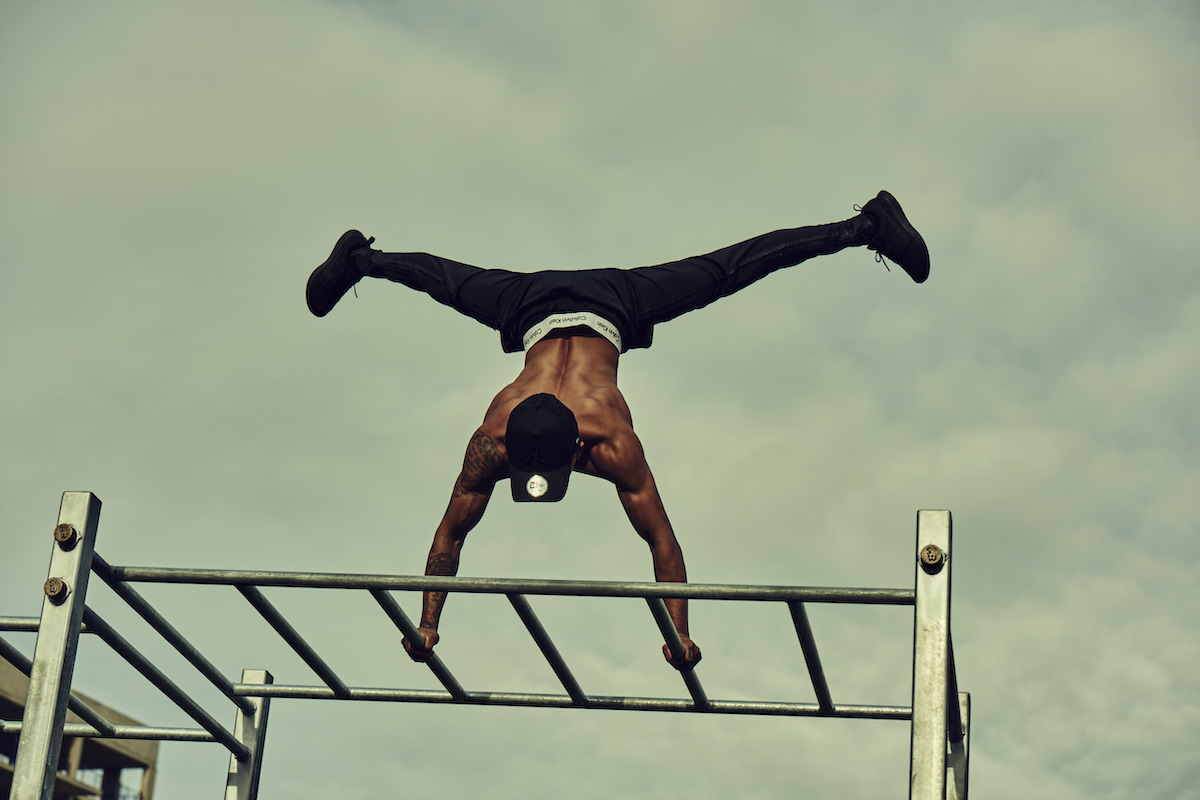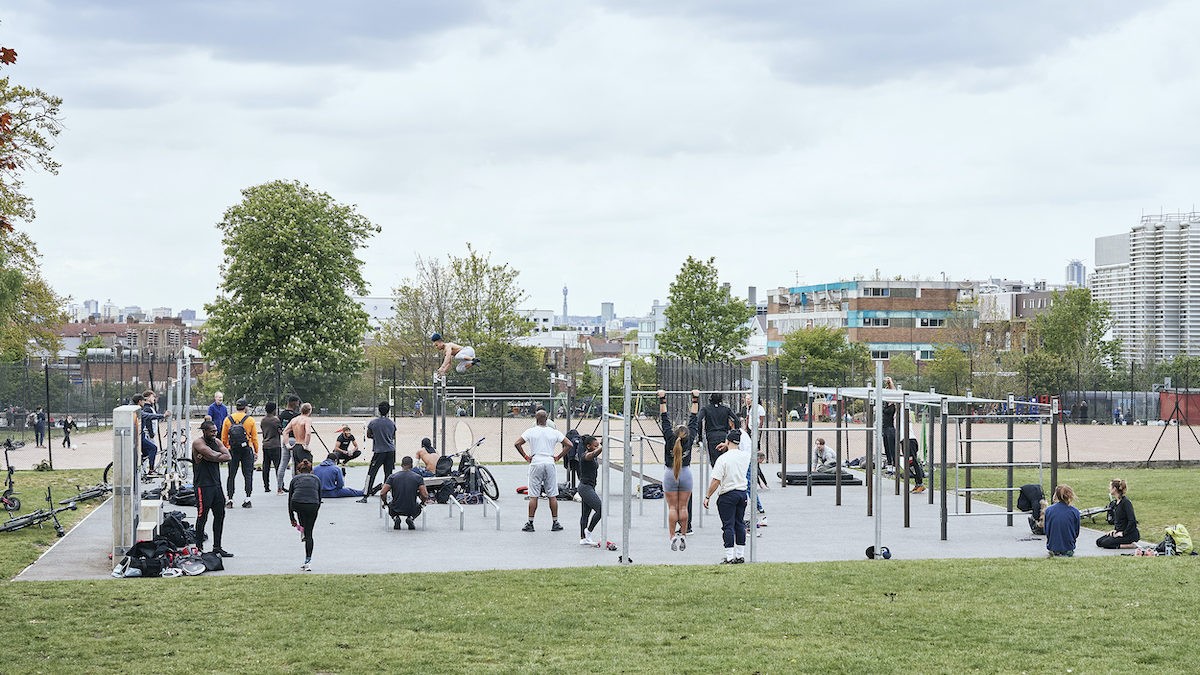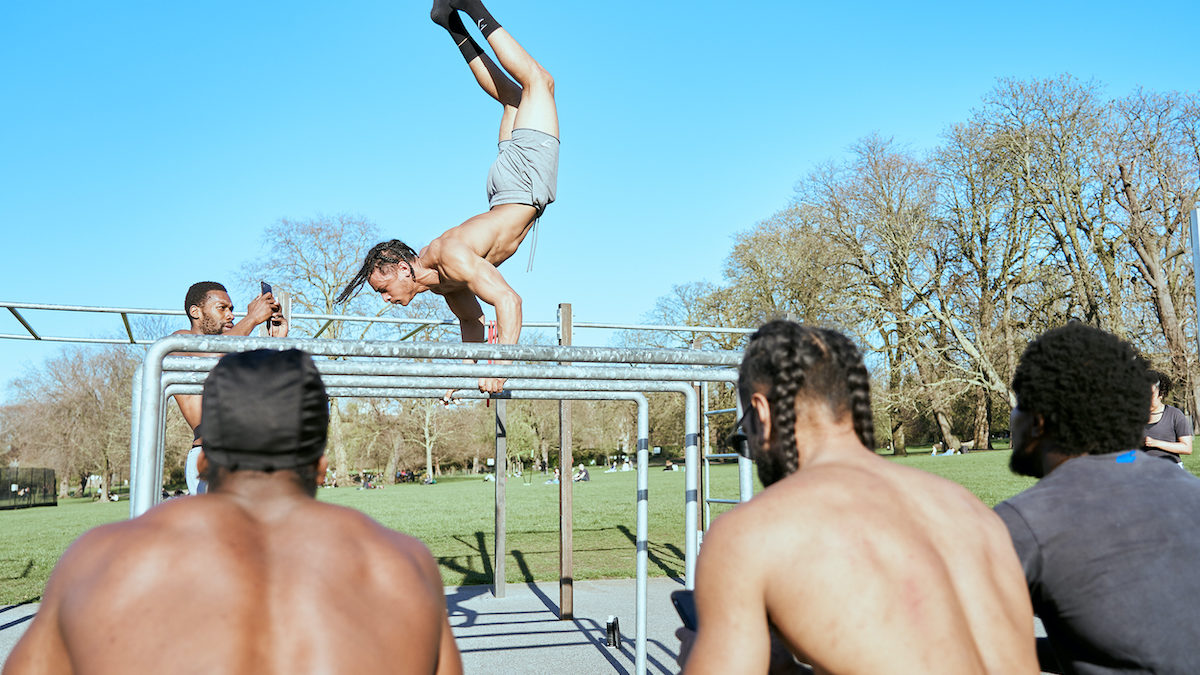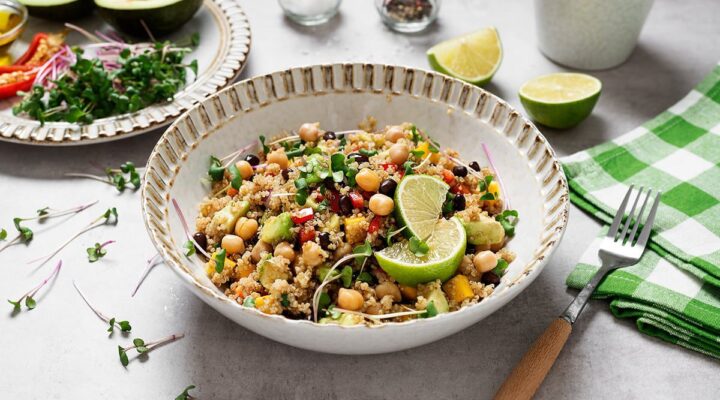Steel Warriors: The London Charity Turning Street Knives Into Outdoor Gyms

In the corner of a small and unassuming green space in East London’s Langdon park, you’ll find the site of the very first Steel Warriors calisthenics gym, one of four across the capital.
At a passing glance, the network of silver beams, often gripped by chalked-up local athletes repping out planches, muscle-ups and back levers, seems little more than a council-funded fitness enterprise. Take a closer look, however, and you’ll see a hardy steel plinth that signposts the area as something far more important than local fitness statistics: it’s the first outdoor gym in the world to be made from knives and blades. More specifically, it’s made from 70 percent recycled knife steel, equal to over two tonnes of reused weaponry from London’s streets.
Not that you’d know it — the modest 15x10m space is surrounded by multi-storey blocks of contemporary flats for the WFH generation, neighbour to an often-abandoned BMX track and, most interestingly, watched over by a statue of Teddy “The Pride of Poplar” Baldock, a local bantamweight boxer who went on to win several national and international titles.
Baldock’s brass immortalisation is an apt comparison to the importance of the Steel Warriors mission statement: to use localised fitness incentives — as the boxer did — to bring communities together and make disruptive, meaningful change at a grassroots level. If successful, the charity should no longer have a means to exist. Until then, however, rising rates of knife crime mean the work done by Steel Warriors has never been more important.
The Origin Story
“Every day, we were reading more and more about the issue of knife crime,” explains co-founder Ben Wintour who, with PR colleague and eventual co-founder Pia Fontes, believed that certain anti-violence campaigns were missing the mark. “We felt there was a way that we could use our skills to encourage people to change their behaviour [and] would get people to think differently about carrying a knife.
“We spoke with a lot of people who had carried knives and been on the receiving end of the issue and would work together with them to try and understand the motives for carrying. Protection was a key motive and so was bravado. At the same time, we heard that the police were taking a tonne of knives off London streets every month and we wondered, ‘is there a way that maybe we can take all of that negative steel effectively, and melt it down and recycle it into something that directly addresses those two motives?’ And that would also allow young people to come together around a shared love for sport.”

Such was the brainwave that would eventually metamorphosise into Steel Warriors — but the journey had only just begun. The steel from the knives, once acquired from the Metropolitan Police, needed to be removed from its casing (it used to be melted down, but is now “smashed by giant hammers,” Wintour explains) and sent to a foundry to be mixed with duplex steel to form a more hardened material that can be poured into different casts. “A lot of the guys who’ve worked with steel for years had never seen something quite as strong,” Wintours laughs.
Working with companies around the UK, including gym equipment manufacturers Rebel Strength, civil engineering firm Heyne Tillett Steel, legal firm Herbert Smith Freehills, waste management group Inciner8 and Boro foundry was instrumental to Steel Warriors’ success. The catch? Every stage of the process needed to be done pro bono. Thankfully, each was happy to oblige. “We met some really amazing people along the journey, from engineers to fabricators to foundries,” Wintour continues. “All sorts of different people rallied together and gave up their time for free. We built our first gym at the tail end of 2017, almost for free.”
Bringing The Community Together
Its location wasn’t based on convenience. Rather, it had to be in gang-neutral territory — ”a consideration that we’ve taken from day one, in which we’re trying to build gyms in the space where everyone feels safe” — and ended up on the fringes of Bow and Poplar in London’s Tower Hamlets. It’s theorised by community leaders that the space dissuades at-risk youths and young adults from gang culture and helps evolve the area from a crime hotspot to a community hub.
Fast-forward to the pandemic, however, and Steel Warriors found an entirely new purpose within the community: free and accessible outdoor fitness. This could be found in the charity’s four sites across London, helping those with then-redundant memberships at shuttered globo gyms squeeze a session in. Understandably, parallels could also be drawn between the origin story of calisthenics in US and UK prisons and government-enforced lockdowns; in which many have to make something from almost nothing.
“[Calisthenics] turns a bad passion into a good passion. It’s helped us to meet people and spend our time in a positive way. It’s made a massive difference to the area,” says Dom, a local gym user at Steel Warriors. The difference isn’t hard to spot — Rahsharn, another regular at the charity’s Poplar gym, visits the site daily and works through a circuit of dips, pull-ups, mountain climbers, press-ups and ab raises. “Before the gym was built there was nothing to do here,” Shaniqua, a resident of Tower Hamlets adds. “Steel Warriors have changed that for us.”

Such is the power of accessible fitness within a community, the gym has allowed athletes to form teams for international calisthenics competitions — these days, they’re even being picked up by sport and lifestyle brands for sponsorship. Team Instinct, for example, has athletes sponsored by Vivobarefoot and JD Sports. Another team, BARSPARTA, also trains frequently at another Steel Warriors site. Their founder, Jay Chris, found sponsorship with Under Armour and Sports Direct, alongside numerous national and international competition wins.
Fittingly, that hardy steel plinth at the entrance to the Poplar gym is the site’s most recognisable piece of reformed steel, upon which an impactful message is etched for those walking by. “It stands to show that lives should be built from steel,” it reads. “Not destroyed by it.”


















